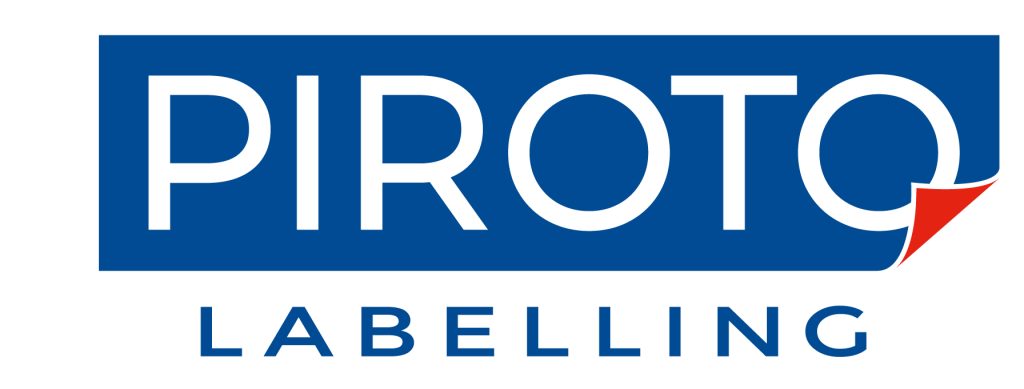Frequently Asked Labelling Products Questions
The easiest way to determine what type of printer you have is to check if it has a printer ribbon. If it does have a ribbon, then it uses a process called thermal transfer. Simply put, your printer uses heat to transfer ink from the ribbon onto your label or tag surface.
If your printer doesn’t have a ribbon them it’s likely to use a process known as direct thermal. The latter refers to the process of using heat to transfer print directly onto heat sensitive, or thermal, substrate.
The image below clearly shows the printer ribbon running over the blue spindles on this portable tag printer.

Most medium to large thermal printers which have a ribbon function will have both direct thermal and thermal transfer print capabilities. There is usually a setting within the printer to switch between the two options.
Printers with direct thermal capability only do have some limitations if your label/tag application include exposure to heat.
If you would like clarification please refer to your printer manual or call our technical team for support.
The overprinting process that you use has a direct bearing on the label or tag substrate you choose.
If your printer does not have ribbon capability included as standard, it will only allow direct thermal printing. This means that a heat sensitive label material (such as direct thermal paper) must be chosen. In this case the heat from the print head reacts directly with the material substrate to create the print.
However, if your printer does have a ribbon capability, you will not be restricted to using thermal label/tag substrates.
A printer ribbon is used in thermal over printers where the heat from the print head transfers onto the ribbon to create print on the label/tag substrate.
Ribbons come in different lengths to suit particular printer models and different widths to best suit the area of print that is required.
Furthermore, printer ribbons come in a range of grades referred to as wax, wax/resin and resin. The different ribbon grades are designed to offer the best print quality and durability for the type of substrate and environment the label will be used in.
For example, a lower cost wax ribbon is best suited for rough paper where the wax can melt into the grooves, and it becomes difficult to scratch off or remove the print. Conversely, using a wax ribbon on a smooth synthetic material will initially look good, but the print will smudge very easily and have no resistance to heat.
Therefore, a resin ribbon is often recommended for synthetic label materials as it burns into the label. This means the print is smudge proof and the label becomes more durable against contamination such as fat, oils, chemicals etc.
A wax/resin ribbon offers mid-range durability and can be appropriate for a synthetic operational label or tag with a short life.
Please get in contact if you’d like more advice on what printer and ribbon set up is best for your operation.
Whether you choose a direct thermal or thermal transfer printing process will depend on several factors. For example, where your traceability labels need to go through an oven, thermal transfer print may work better as heat sensitive thermal substrates may blacken if exposed to heat. You can read our guide to thermal materials for more information.
Our team are experts in traceability labelling and will work with you to customise the prefect label or tag for your operation. Please get in contact to discuss your exact labelling needs.
Both thermal coated and thermal uncoated labels can be overprinted using a direct thermal process. The key difference between coated and uncoated materials is the durability of the label. Uncoated materials are less durable and can be prone to scuffing. However, they are perfect for short term labelling requirements.
Conversely, thermal coated labels, also known as top-coated thermal labels, are more durable and resistant to moisture, chemicals, and smudging.
You can discuss the best option for your operation with our label experts.
There are three main types of synthetic label materials commonly used here at Piroto that, unlike paper, all offer very good durability and moisture resistance. These are known as Polyethylene (PE), Polypropylene (PP), and Polyester (PET).
When labelling curved surfaces PE is often used. The material has an element of stretch and contorts well to curved shapes, like a bottle. Moreover, PE works well on uneven surfaces such as flexible packaging.
If you are looking for heat resistance, then PP is a better synthetic substrate. However, it lacks the stretch properties of PE, so is better suited to labelling flat surfaces.
When high heat resistance is required, PET is often specified for your label. It is generally more expensive than PP or PE but performs better in certain environments.
Beyond the performance of your label, you may also be looking for an ecofriendly solution. We have access to a wide range of sustainable labels and will be happy to advise you.
At Piroto we customise our labels and tags to meet your exact requirements so yes, we can produce a label to work with your existing label printer. Be sure to let us know the make and model of your printer so we can ensure a high-performance solution.
In addition, if you are a large label or tag user, we can provide trial labels to ensure everything is working perfectly before rolling out to your entire operation.




























